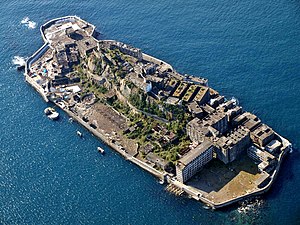Difference between revisions of "Stork Island"
LeotropolisG (talk | contribs) |
LeotropolisG (talk | contribs) |
||
| Line 42: | Line 42: | ||
In 1699 a wooden bridge was built to connect the island with the Mainland for merchants to move faster over the water as opposed to by boat. | In 1699 a wooden bridge was built to connect the island with the Mainland for merchants to move faster over the water as opposed to by boat. | ||
| − | === | + | ===withdrawal=== |
After the dissolution of Eastern Hemisphere Trade Company in 1781, the island was abandoned. Everything important was taken away and only bare bone buildings were left. The island was left abandoned for a few years, with mostly homeless inhabiting it. The wooden bridge was destroyed by a storm in 1795 and was never rebuilt. | After the dissolution of Eastern Hemisphere Trade Company in 1781, the island was abandoned. Everything important was taken away and only bare bone buildings were left. The island was left abandoned for a few years, with mostly homeless inhabiting it. The wooden bridge was destroyed by a storm in 1795 and was never rebuilt. | ||
[[File:Plattegrond van Deshima.jpg|thumb|right|depiction of Stork Island (1721)]] | [[File:Plattegrond van Deshima.jpg|thumb|right|depiction of Stork Island (1721)]] | ||
Revision as of 04:09, 7 February 2024
Native name: 鹳岛 | |
|---|---|
 | |
| Geography | |
| Location | Northwest of Shaoyu |
| Area | 0.063 km2 (0.024 sq mi) |
| Area rank | none |
| Demographics | |
| Population | 1,131 (2023) |
Stork Island (Monsilvan: 鹳岛; pinyin: Guàn dǎo; Shaoyunese: TBD) is a artificial island located 824 meters from the coast of Northwest Shaoyu. The Island was constructed in the beginning of the 16th century. It served as a outpost for Reykanes for 267 years.
History
Under Reykanes
By the 16th Century, merchants from the Eastern Hemisphere Trade Company visited Eastern Ostlandet for potential trade routes and set up camp in modern day Yamfong in 1509, called the Pandaströnd Outpost (1509-1781), called after Pandas seen in Monsilva. The company would be present there for 272 years. Due to the protective policies at the time, the outpost was to small for long operations. With the ever growing demand of spice, the area become a hotspot for Reykani merchants as the area was one of the largest spice producing regions. This took the Company in opening more trade outposts, like in mainland Monsilva. The Trade Company and the local city had an argument of expanding the outpost, after multiple failed negotiations, the company decided to build an artificial island to enlarge the outpost, with further annual rent payed to the city from the Reykaniese. An islet was chosen for a base and started to build in 1511 and finished in 1514. The island become a booming trade outpost as most ships stopped here to refill to continue their trip to various other trade outposts in the region. It become a de-facto capitol of Reykaniese Monsilva. Reykanes gained monopoly on spice trade in the region by 1560s. Reykani styled houses were built on the island, it was also nicknamed "Little Reykanes" by the inhabitants. Some families that were involved in trading even moved there.
In 1699 a wooden bridge was built to connect the island with the Mainland for merchants to move faster over the water as opposed to by boat.
withdrawal
After the dissolution of Eastern Hemisphere Trade Company in 1781, the island was abandoned. Everything important was taken away and only bare bone buildings were left. The island was left abandoned for a few years, with mostly homeless inhabiting it. The wooden bridge was destroyed by a storm in 1795 and was never rebuilt.
